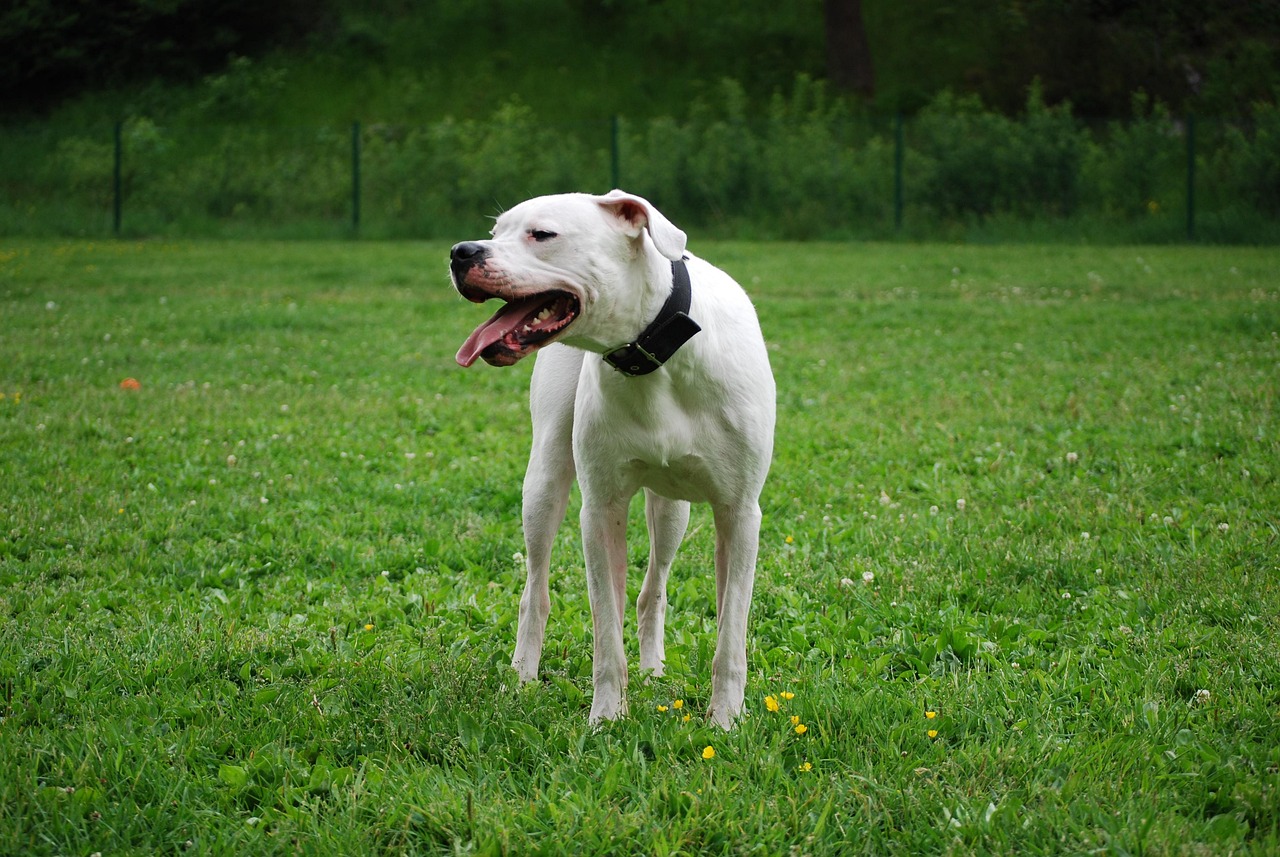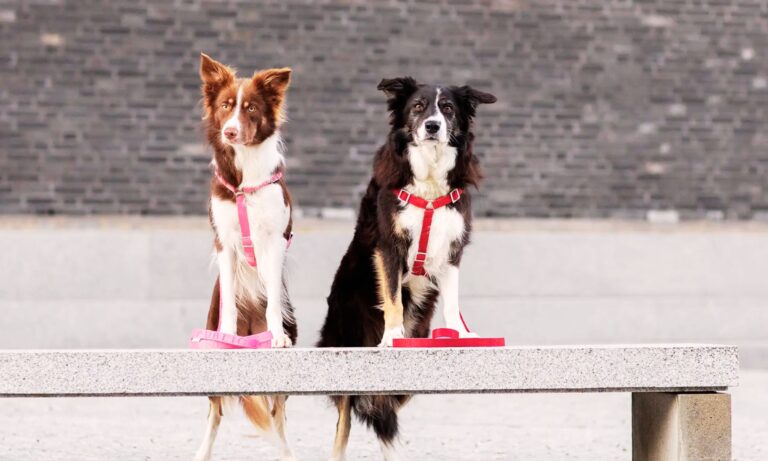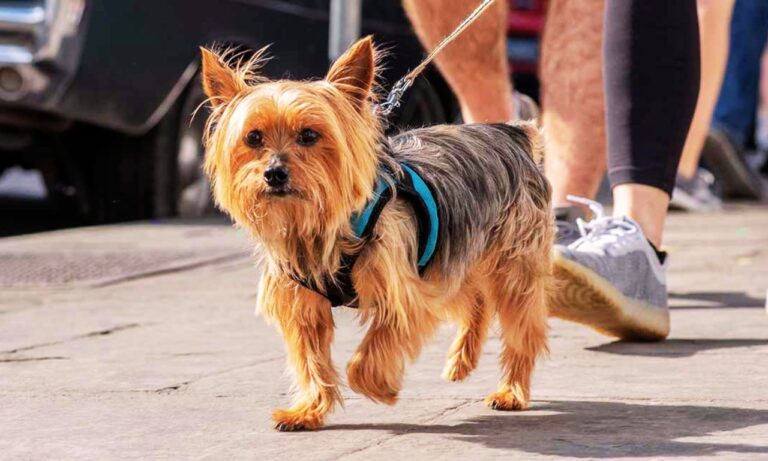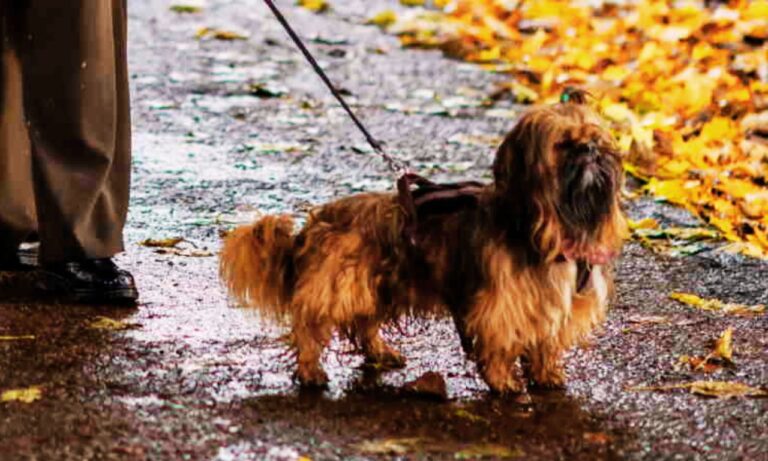| Summary: Dogo argentino breed characteristics: The Dogo Argentino is a powerful, muscular breed known for loyalty, intelligence, and strong guarding instincts. Bred for hunting, they have high energy, requiring firm training and socialization. Their short, white coat needs minimal grooming. Protective yet affectionate, they thrive in active homes with experienced owners who provide consistent leadership. |
The Dogo Argentino is a striking and powerful breed known for its impressive physical presence, remarkable loyalty, and versatile abilities. Originating in Argentina as a big-game hunting dog, the Dogo has evolved into a multifaceted companion capable of excelling in various roles—from family protector to search and rescue partner. The Dogo Argentino is a powerful, muscular breed known for its strength, intelligence, and loyalty. GPS dog collars can help track this high-energy breed during outdoor adventures.
I will delve into the dogo argentino breed characteristics, breed’s history, physical features, temperament, training needs, exercise requirements, health concerns, nutritional tips, grooming routines, and other essential factors to help prospective owners and dog enthusiasts understand what makes the Dogo Argentino truly unique.
For detailed guidance on ensuring the perfect collar fit for your St. Bernard, check out the Best Practices for St. Bernard Collar Adjustment to keep your dog comfortable and secure.
Blog Highlights
ToggleHistory and Origins
The story of the Dogo Argentino begins in the early 20th century when Dr. Antonio Nores Martínez, an Argentine veterinarian and breeder, sought to create a breed capable of hunting dangerous game while remaining a devoted family companion. Dr. Martínez’s goal was ambitious: develop a dog that could confront large predators like wild boars and pumas while remaining gentle enough to live with people.
To achieve this, he carefully selected and crossbred several breeds. The Dogo Argentino’s ancestry includes elements from the now-extinct Cordoba Fighting Dog, as well as contributions from powerful breeds such as the Great Dane, Boxer, Spanish Mastiff, Bull Terrier, Irish Wolfhound, and Pyrenean Mastiff.
Each of these breeds contributed different traits—strength, agility, endurance, and protective instincts—to create a balanced and formidable hunting dog. Originally bred for big-game hunting, the Dogo Argentino is courageous and protective, making it an excellent guardian. Pet tech products like activity monitors help ensure proper exercise levels.
Over the decades, the breed’s working abilities and striking appearance helped establish the Dogo Argentino as not only a capable hunter but also a loyal companion. Today, while still retaining much of its original purpose, the breed is equally admired for its performance in sports, obedience trials, and various canine competitions.
Dogo Argentino Breed Characteristics
Appearance and Build
One of the most distinctive features of the Dogo Argentino is its muscular, athletic build. This breed is known for its robust structure, which combines power with grace. Adult Dogos exhibit a well-balanced frame that exudes strength and confidence. Despite their tough exterior, they are affectionate with their families and require socialization to thrive. Electronic dog collars can assist in reinforcing obedience training.
- Size: Males typically stand between 24 to 27 inches tall at the shoulder, while females are slightly shorter, averaging 23.5 to 26 inches.
- Weight: The breed usually weighs between 80 to 100 pounds, with an ideal weight that supports its agile yet sturdy build.
- Coat: The Dogo Argentino sports a short, smooth, and dense coat that is almost entirely white. In some cases, a small black spot may appear on the head—a rare exception to the breed standard. The coat’s simplicity not only accentuates the dog’s muscular physique but also makes maintenance relatively straightforward.
- Facial Features: With a broad, powerful head, strong jaws, and a deep-set black nose, the Dogo’s face exudes determination. Its eyes, which can range from dark to light brown, convey an alert and intelligent expression. While many owners opt for ear cropping to accentuate an erect appearance, naturally, these dogs are born with floppy ears that can be left unaltered.
Distinctive Markings and Color

The uniform white coat is not just a matter of aesthetics. In many working and competitive circles, the pure white appearance of the Dogo Argentino symbolizes purity, strength, and an unyielding spirit. This striking coloration also historically played a role in distinguishing the breed in the field.
Ensure your Newfoundland’s comfort and security with expert tips on how to ensure a safe collar fit for Newfoundland.
Temperament and Personality
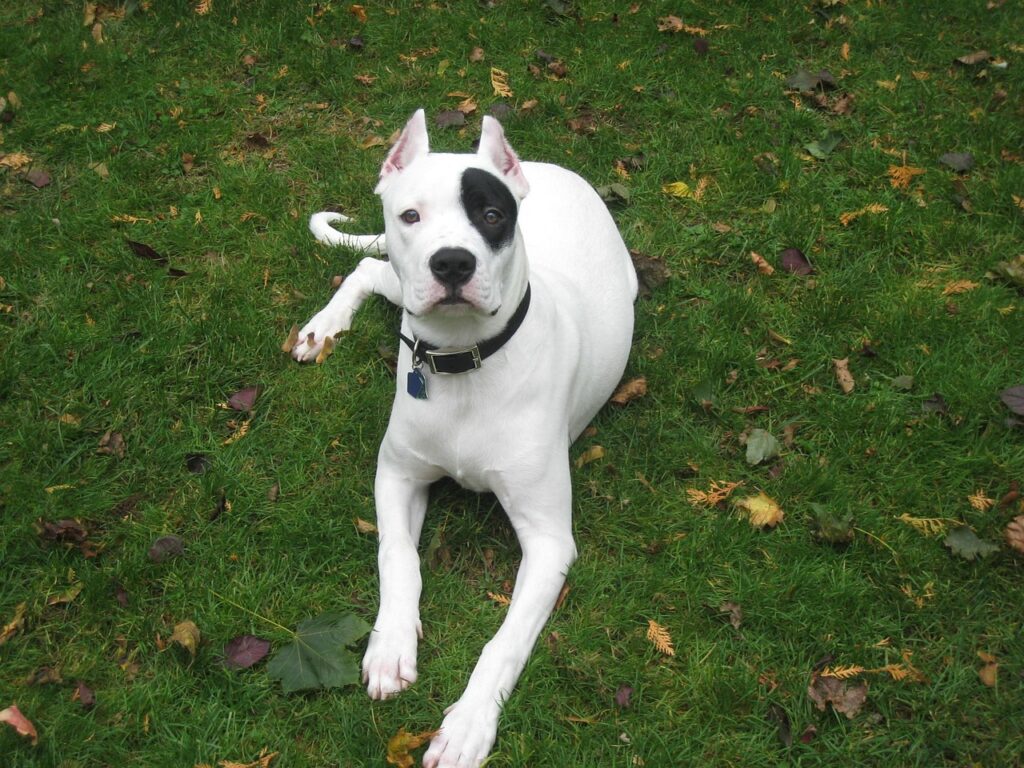
Despite its formidable appearance, the Dogo Argentino is much more than a muscular hunting dog. It possesses a personality that combines intelligence, loyalty, and an innate protective instinct. However, its strong-willed nature demands responsible and experienced handling.
Loyalty and Protective Instincts
The Dogo Argentino is renowned for its fierce loyalty. When integrated into a family, the breed becomes a vigilant guardian, ever ready to defend its loved ones from potential threats. This protective nature, when paired with proper socialization, makes the Dogo an excellent watchdog without being unnecessarily aggressive toward benign strangers. Strong-willed and energetic, they need experienced handlers and structured training. Dog training equipment is essential for managing their strength and temperament.
Intelligence and Trainability
Dogos are exceptionally intelligent and possess an eagerness to please their owners. They respond well to positive reinforcement training methods, which harness their natural curiosity and willingness to learn. Early and consistent training is essential, as it channels their energy and ensures that their protective instincts do not morph into over-aggressiveness. With the right guidance, Dogos excel in obedience, agility, and even advanced protection training.
Energy and Playfulness
High energy is a defining trait of the Dogo Argentino. They thrive in environments where physical and mental challenges are plentiful. Whether they are engaged in vigorous outdoor activities or stimulating training sessions, these dogs relish the opportunity to expend their boundless energy. Their playful side also makes them wonderful companions for families that lead an active lifestyle.
Socialization: Balancing Wariness and Friendliness
While Dogos are naturally social and affectionate with their families, they tend to be cautious around strangers, especially when not properly introduced. Early socialization is critical to ensure they are well-adjusted and can differentiate between genuine threats and benign interactions. With consistent exposure to varied environments and people, the Dogo can develop a balanced temperament that is both protective and sociable.
Discover the ideal fit by learning what size collar for Newfoundland dog to ensure your pet’s comfort and safety.
Training and Socialization
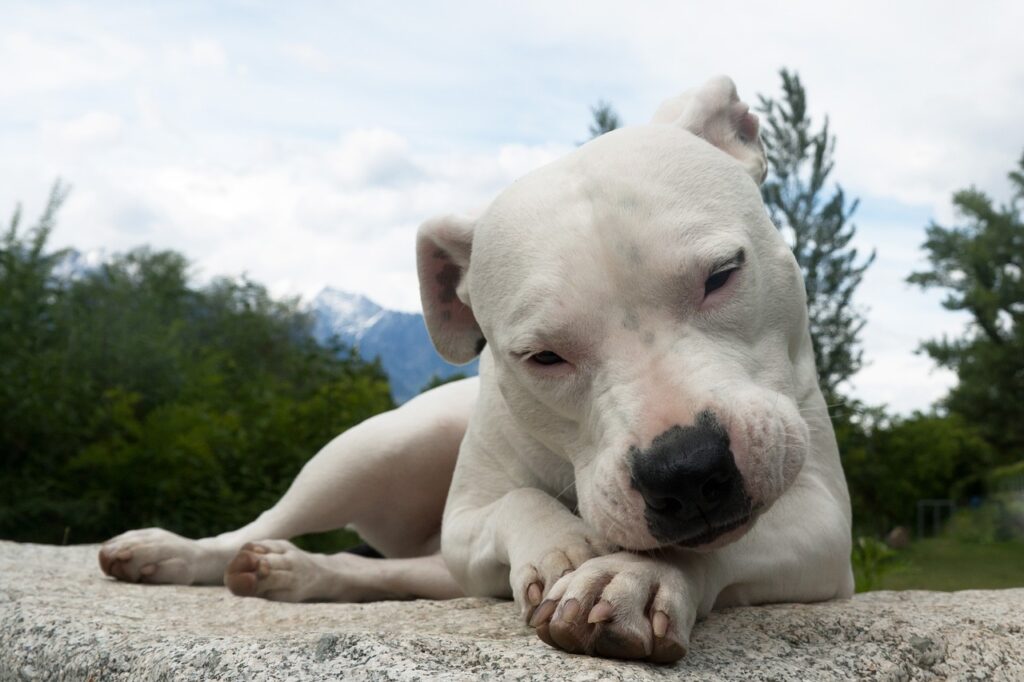
Training a Dogo Argentino requires a firm yet fair approach. Given their intelligence and strong personality, the breed responds best to structured training that emphasizes consistency and positive reinforcement.
Starting Early
Introducing basic commands and socialization techniques at an early age is crucial. Puppies should be exposed to different environments, sounds, and experiences to build confidence and reduce anxiety around unfamiliar situations.
Techniques and Approaches
- Positive Reinforcement: Reward-based training using treats, praise, and play is highly effective. This approach not only motivates the Dogo but also builds trust between the dog and its owner.
- Consistent Leadership: The Dogo Argentino requires a handler who exudes calm authority. Clear boundaries and expectations help prevent behavioral issues.
- Socialization: Structured exposure to various people, other dogs, and new environments during the critical socialization period (up to about 16 weeks) is essential. This early exposure can help mitigate the breed’s natural wariness and potential aggressiveness toward unfamiliar stimuli.
- Advanced Training: Once basic obedience is established, engaging in agility, scent work, or even protection training can be beneficial. Such activities not only keep the Dogo mentally stimulated but also reinforce good behavior.
Exercise and Activity Needs

The Dogo Argentino is not a sedentary breed. Its high energy levels demand regular, vigorous exercise to maintain both physical health and mental well-being.
Daily Routine
- Long Walks and Runs: Daily exercise should include brisk walks or runs, ideally lasting at least 60 to 90 minutes. For an active household, incorporating hiking or jogging sessions can be particularly rewarding.
- Interactive Play: Games such as fetch, tug-of-war, or agility exercises help burn off excess energy while reinforcing training commands.
- Mental Stimulation: Puzzle toys, scent games, and training sessions are essential to keep the Dogo’s sharp mind engaged. A bored Dogo can quickly develop undesirable behaviors if not properly stimulated.
Exercise Benefits
Regular physical activity enhances the dog’s cardiovascular health, muscle tone, and overall vitality. It also helps in reducing stress and anxiety, which can be particularly important for a breed known for its intense focus and protective instincts.
Health and Lifespan
The Dogo Argentino typically enjoys a lifespan of 9 to 15 years, provided it receives proper care and regular veterinary attention. While generally a robust breed, Dogos are predisposed to certain health concerns that potential owners should be aware of.
Common Health Concerns

- Deafness: There is a genetic predisposition toward deafness, affecting approximately 10% of Dogos. This trait is often associated with the breed’s white coat.
- Hip Dysplasia: Like many large breeds, the Dogo Argentino may develop hip dysplasia—a condition that can impair mobility and cause pain.
- Skin Sensitivities: Due to their short coat, Dogos can be prone to sunburn and other skin irritations if not adequately protected from prolonged sun exposure.
- Hypothyroidism: This endocrine disorder can result in weight gain, lethargy, and skin problems if not properly managed.
Preventive Care and Monitoring
Regular veterinary check-ups, along with routine screenings for common conditions, are essential. A balanced diet and proper exercise contribute significantly to maintaining the dog’s overall health and longevity. Joint supplements and a carefully monitored diet can also help manage and prevent issues like hip dysplasia.
For expert tips on how to fit a collar on a Belgian Shepherd, this guide offers simple steps to ensure your dog’s collar fits securely and comfortably.
Nutrition and Feeding
The dietary needs of the Dogo Argentino are closely tied to its active lifestyle and muscular build. A diet rich in high-quality proteins, moderate fats, and limited carbohydrates is essential for optimal health.
Dietary Guidelines
- Protein: High-quality animal protein should make up a substantial portion of the diet, helping to maintain muscle mass and support the dog’s energetic lifestyle.
- Fats: Essential fats are important not only for energy but also for maintaining a healthy coat and skin.
- Carbohydrates and Fiber: While carbohydrates can be included, it is advisable to focus on fiber-rich sources like vegetables and whole grains. Some owners prefer a grain-free diet, especially if their dog shows sensitivity to certain grains.
- Meal Frequency: Depending on the dog’s age and activity level, feeding can be divided into two or three meals per day. Puppies may require more frequent, smaller meals.
Special Dietary Considerations
Owners may choose between a raw diet and high-quality commercial kibble. If opting for a raw or homemade diet, it is crucial to ensure that all nutritional requirements are met and that the diet is balanced. Consulting with a veterinary nutritionist can be a helpful step in tailoring the diet to the specific needs of the Dogo Argentino.
Grooming and Maintenance
Despite the Dogo Argentino’s imposing appearance, grooming is relatively simple due to its short, low-maintenance coat. However, regular grooming routines are still important to keep the dog comfortable and healthy.
Grooming Routine
- Brushing: Weekly brushing is sufficient to remove loose hair and distribute natural oils throughout the coat. This simple act also provides an opportunity to check for any skin irritations or abnormalities.
- Bathing: Bathe your Dogo approximately every 6 to 8 weeks or as needed based on outdoor activity. Overbathing should be avoided, as it may strip natural oils.
- Nail Trimming: Regular nail trimming—about once a month—helps prevent overgrowth, which can lead to discomfort or issues with gait.
- Dental Care: Brushing the dog’s teeth 2 to 3 times a week can help prevent dental issues and maintain fresh breath.
- Ear Care: Although many Dogos have naturally floppy ears, ensuring that the ears are kept clean and free of excess wax is essential to prevent infections.
For detailed guidance on selecting the correct collar size for a Belgian Shepherd, this article provides essential tips to ensure your dog’s comfort and safety.
Ownership Considerations
The Dogo Argentino is not a breed for every household. Prospective owners must be prepared for the breed’s high energy, strong personality, and need for firm, consistent training.
Ideal Owners
- Experienced Dog Owners: The breed’s strong-willed nature and protective instincts require someone who has a background in handling and training assertive dogs.
- Active Individuals and Families: Dogos thrive in environments where there is ample opportunity for exercise and mental stimulation. Families that enjoy outdoor activities like hiking, jogging, or long walks are particularly well-suited.
- Home Environment: A spacious home with a secure, fenced yard is ideal for a Dogo Argentino. This allows the dog to safely expend its energy and engage in regular exercise.
- Commitment to Training: Owners must be committed to early socialization and ongoing training. The dog’s natural guarding instincts, while beneficial in many ways, need to be moderated through consistent and positive reinforcement training.
Challenges and Considerations
- Not for First-Time Owners: Given their size, strength, and intensity, Dogos may not be suitable for novice dog owners.
- Legal Considerations: In some regions, strict breed-specific legislation may apply. It is important to research local laws regarding ownership and any special requirements or restrictions.
- Time Commitment: The breed’s need for exercise, training, and socialization means that owners must be willing to dedicate significant time to their dog’s care and development.
Discover the perfect collar size for an Anatolian Shepherd Dog to ensure comfort and security for your furry friend.
Fun Facts of Dogo Argentino
The Dogo Argentino is a breed with an intriguing background and a host of interesting dogo argentino breed characteristics. Here are some fun facts and lesser-known insights about this impressive dog:
- Versatile Worker: While originally bred for big-game hunting, Dogos have also served in roles such as police work, search and rescue, and even as therapy dogs in some instances.
- Iconic Appearance: Their brilliant white coat not only stands out in the field but also historically helped hunters spot their dogs against the natural backdrop, enhancing coordination during hunts.
- Cultural Symbol: In Argentina, the Dogo Argentino is considered a symbol of national pride—a testament to the country’s rich tradition of hunting and a reflection of its cultural heritage.
- Misunderstood Temperament: Although their imposing look may give the impression of aggression, Dogos are known for their gentle and protective nature when properly socialized.
- High-Profile Recognition: The breed has garnered attention in dog sports and exhibitions worldwide, proving its versatility beyond the confines of traditional hunting roles.
- Loyalty to a Fault: Anecdotes from Dogo owners often recount instances of the breed going to great lengths to protect family members—sometimes even showing unexpected tenderness toward children and the elderly.
- Adaptable in the Field: Despite their power and size, Dogos have been successfully trained to perform delicate tasks that require a level of finesse and precision, which underscores their adaptability and intelligence.
Final Words
The Dogo Argentino stands out as a remarkable breed—a perfect blend of strength, agility, intelligence, and loyalty. Originally engineered for the rigors of big-game hunting, the breed has evolved into an all-around working and family dog that thrives on physical activity, mental stimulation, and consistent training.
Their impressive build, combined with their gentle yet protective temperament, makes them suitable for experienced owners who understand the importance of dedication, exercise, and structured socialization.
Learn more about the unique double-layered coat of an Anatolian Shepherd and how to care for it effectively.
For those willing to invest time and effort into meeting their needs, the Dogo Argentino rewards its family with unwavering loyalty and an energetic presence that can enrich any active household.
Whether you’re looking for a dependable guardian, a partner in outdoor adventures, or simply a companion with a rich history and vibrant personality, the Dogo Argentino might just be the ideal match.

